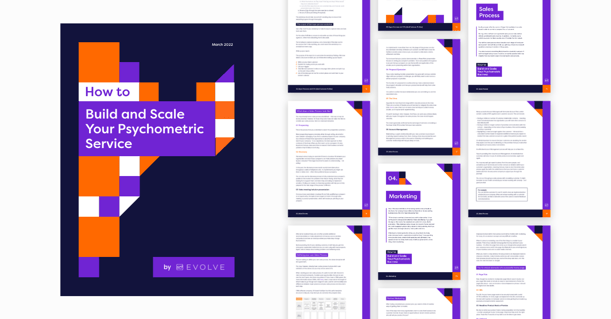First of all, what is a buyer persona?
A buyer persona is a semi-fictional character made up of behaviours and characteristics associated with your company’s target audience (the people who will buy our product/service).
Buyer personas are an important part of sales and marketing as they allow you to be more specific in your messaging and talk directly to the audience you want to sell to. For example, if you understand that your buyer persona’s key challenge is employee attrition, you can engage in a conversation with that persona about how to reduce the rates of attrition in their business.
As these semi-fictional characters essentially represent your target audience, it’s good to have some strong buyer personas when working on new sales and marketing content especially if you’re looking to grow your psychometric services , and we recommend starting with 2-3 personas.
What does a buyer persona look like?
A buyer persona, whether nicely designed in a printout and stuck on the office wall, or a simple PDF that you access from time to time should make clear all of the behaviours, characteristics, challenges and triggers that a prospective buyer might have.
When working on the buyer personas, it’s really important to take the time to fully consider the position your personas have within the business, whether they have decision making authority (or act as influencers to those more senior), what their interests are and what motivates them.
A good way to develop a buyer persona is to start with a persona workshop.
Running a Buyer Persona workshop
The purpose of the buyer persona workshop is to understand the interests, frustrations, concerns and challenges of these people – it is not to focus on your company message to them.
It’s best carried out with a few people in the business, although we understand in start-up and small businesses, this might only be a couple of people – regardless, it’s a good exercise to carry out.
Learn more about who should be included in a buyer persona workshop in our guide: How to Build and Scale Your Psychometric Service

Here’s a rough agenda for the workshop:
- Describe your ideal customer – include size by geography, size by employees, turnover, industry, maturity, type, market conditions and consider the problems you can solve for the customer.
- Break down the buying centre – who makes the decisions in the companies you want to sell to and what is the decision-making criteria they use? For example, if you’re targeting people in the recruitment department of a large organisation, who has the buying power? Possibly the recruitment director? And who are the influencers for this role?
- Consider the competitive landscape – who’s in the marketplace already and what changes are happening/coming down the line and how will this interest/affect our ideal customers?
- Triggers – this is anything that could trigger your persona to look for a product or service like yours – whether that’s high attrition rates, new hires not performing, new employees not being a good cultural fit etc. List as many triggers for each persona as possible!
- Describe your personas
- Who are they – in their business, but also what are they interested in?
- What do they read?
- Where do they consume information?
- What do they subscribe to?
- What do they really care about?
- What are their challenges and the implications of these challenges?
- What frustrations do they have?
- What would they do to alleviate them?
- List all of the ways that we can currently help, and how we could potentially help in the future.

The last step can be repeated for each persona you want to create.
From the persona workshop, you can create a report that clearly shows and defines each buyer persona, which is then used to help plan out your sales and marketing messaging for future campaigns and sales tactics.
How you design the buyer persona report is up to you, but the most important thing is that everyone who needs to can access it and that they understand why it’s important and the value it serves!